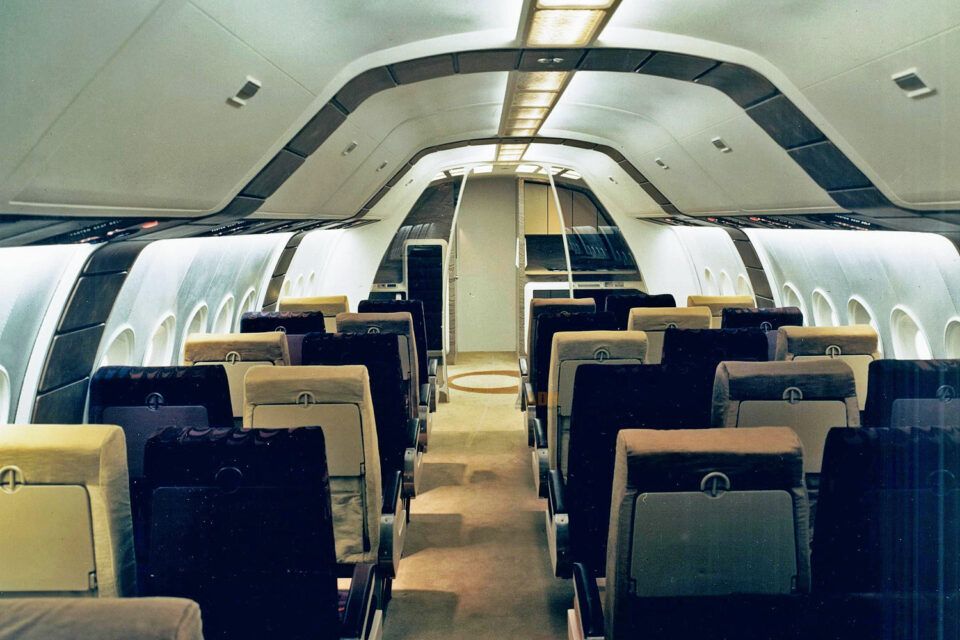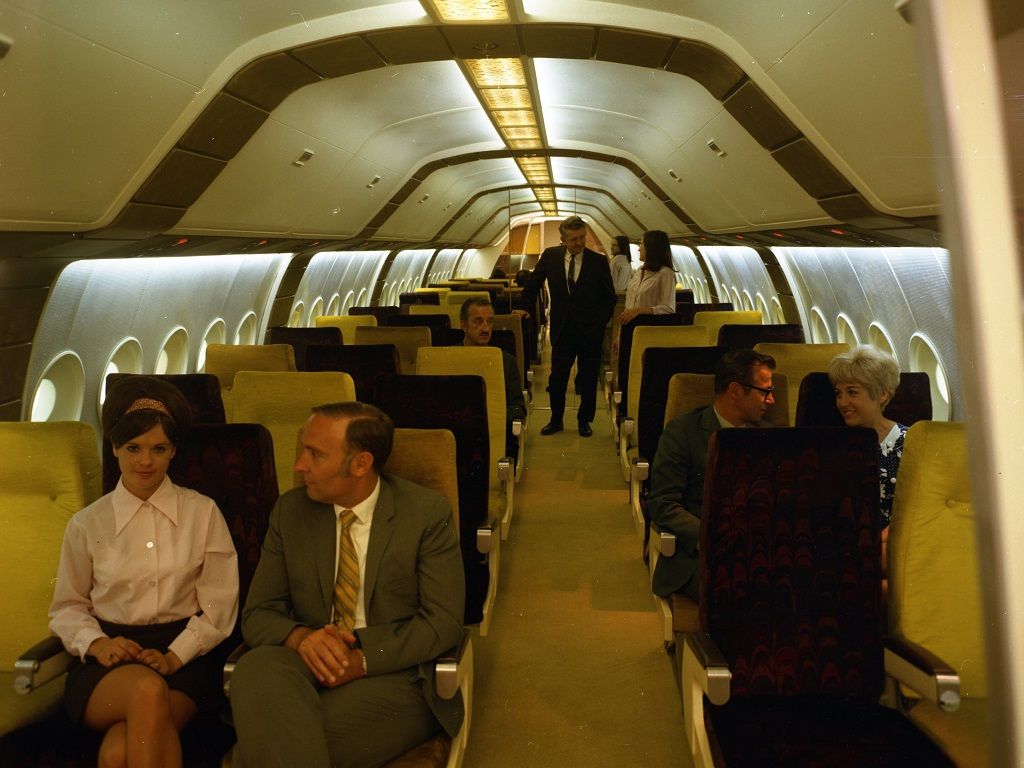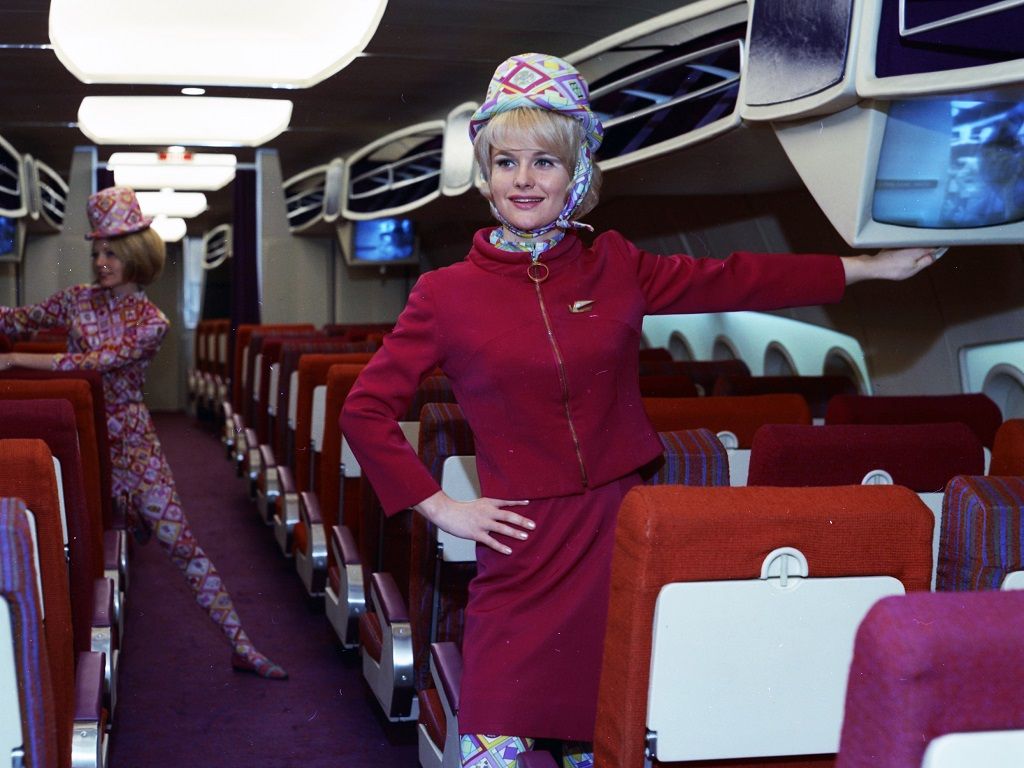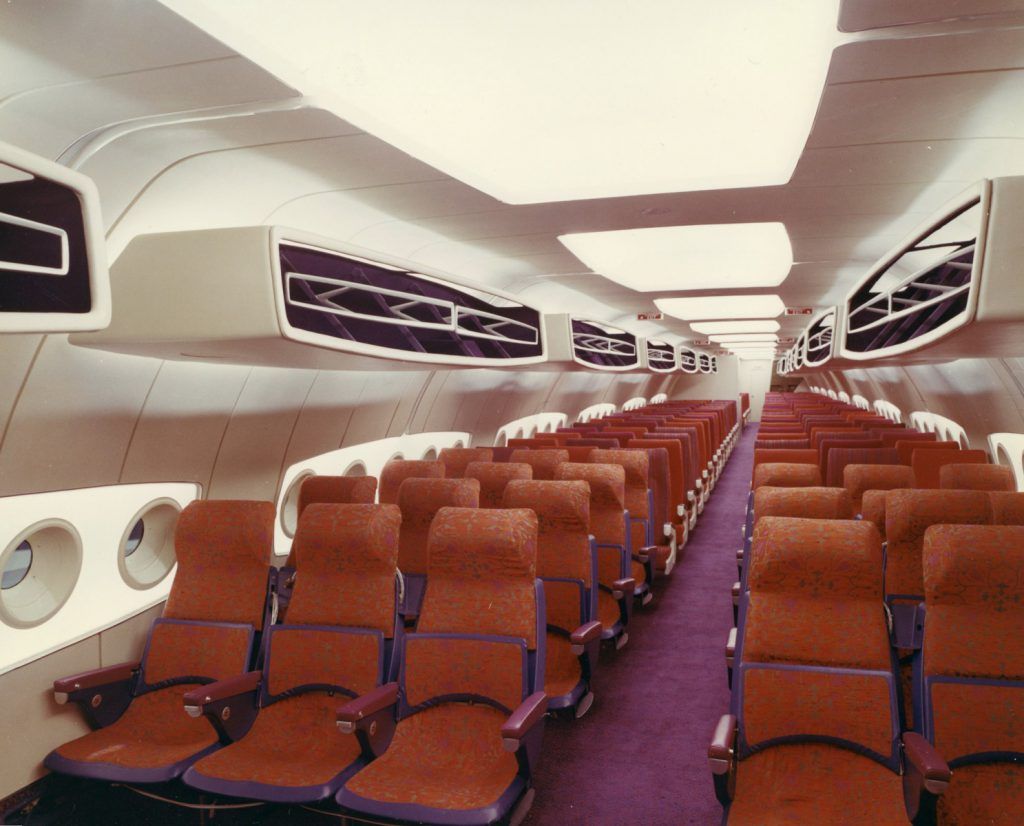Summary
- The Boeing 2707, a supersonic jet that never flew, would have had a lavish cabin with 250-300 passengers seating in a single-aisle concept.
- The first-class cabin would have offered luxury with 30 reclining leather seats, exclusive television privileges, and small windows for maximum pressure.
- The business class cabin, a fresh concept then, featured ergonomic seating with ample legroom and foldable seat tables for efficiency.
After the United Kingdom and France had built the ever-iconic Concorde and Russia developed the Tupolev Tu-144, the United States had similar competitive ambitions to create its supersonic commercial aircraft. Such ideologies received approval when, in the early 1960s, then-President John F. Kennedy allowed subsidizing up to 75% of the development expenses for the country’s supersonic jet campaign.
Boeing undertook this campaign, and when initially developed in the late 1960s and early 1970s, the Boeing 2707 was supposed to be the highly-anticipated supersonic transport aircraft that would help the US win the race to the sound barrier with a speed of Mach 3.0. However, the project fell through due to the withdrawal of government funding, high fuel prices, and airlines seeking more fuel-efficient aircraft.
Cabins that never flew
Despite the project having never passed Boeing’s drawing board, the Boeing 2707 still highlighted a design that would have been the pinnacle of then-modern aviation innovation. Besides having the aircraft drawn up with the well-liked delta-wing aerodynamic design, the Boeing 2707 was equally anticipated for its cabin.
While Concorde could transport up to 128 passengers and the Tu-144 could carry approximately 140 passengers, the Boeing 2707 would outshine these massively had it ever been produced. But how much would the aircraft’s cabin have eclipsed that of the other two supersonic jets?
The aircraft cabin was designed with seating for about 250 to 300 passengers in a single-aisle concept, so it’s no surprise that at the time, the aircraft cabin mock-up was often dubbed a masterpiece of aviation design that significantly embodied luxury with comfort, innovation, and safety – all while passengers would still have been able to break through the sound barrier.
Considering their smaller capacities, Concorde and the Tupolev Tu-144 were often operated and configured for single-class cabin flights. However, with its bigger seating capacity, Boeing marketed its 2707 to have two cabin classes – albeit some airlines would eventually try to market it for three. In the first class cabin, the aircraft supposedly boasted of a luxurious experience for passengers as it would have housed up to 30 reclining leather seats.
Photo: Boeing Historical Archives
These seats were in a 2-3 configuration, with every seat planned to include exclusive television privileges in a console stored between the seats. Although the windows were relatively small, about six inches, to maximize pressure, the internal pane was about double that, at 12 inches, to give passengers an optical and comfortable illusion of size.
Functional business class
Then there was the business class cabin, which less than a handful of airlines were marketing at the time, as this was a considerably fresh concept. One example was Trans World Airlines (TWA), which had ordered an estimated 12 aircraft and was the second-biggest order behind Pan American Airways’ massive order of 15. At the time, TWA offered relatively unusual three-by-two seating in a unique cabin behind first class.
Photo: Boeing Historical Archives
This cabin was initially marketed as the Ambassador Business Class before it was switched to Ambassador Class. The onboard product featured:
- Ample legroom
- Foldable seat tables
- Ergonomic seating.
Comfortable economy class
And all that was left of the Boeing 2707 cabin was the over 200 seats left in economy class, or as some would have termed it at the time, the tourist class. When the first big mockup of the aircraft was unveiled in a hangar in Seattle in September 1966, and when Boeing regularly offered public tours, this cabin section saw many people patiently queue up in long lines at the overwhelming hangar doors.
Demonstrated in a three-by-three configuration, the economy class cabin was not as luxurious as first class but still promoted uncompromised comfort. Compared to the considerably cramped Concorde – if airlines maxed out the configuration for optimal capacity, the Boeing 2707 cabin was well-received for being more spacious with wider seats and comfortable with ample legroom still.
Photo: Boeing Historical Archives
Although these passengers would not have television consoles per a pair of seats, the mockup highlighted how those in economy class would still benefit from hung-down television screens separated across several rows. While these might not have sounded much, it was still rather captivating for passengers then and when compared to the Concorde.
Other interesting elements
Besides the different cabin configurations, Boeing wanted its 2707 cabin to exhibit similarities to a space shuttle theme, considering the whole idea of a supersonic jet was to break the sound barrier. The aircraft manufacturer incorporated overhead baggage stowage bins for the cabin mockup. However, they looked slightly unconventional and beyond the usually small overhead rack with a small lip to ensure nothing loose escaped the compartments.
Instead, the idealized overhead bins were slightly bigger with glass-paneled doors to give a futuristic outlook. However, these bins were assumably only available in economy class to ensure that first and business class passengers had more headroom for ultimate comfort. In terms of cabin lighting, the economy class in the cabin mockup had distinctively huge lights that were considered unconventional in design compared to those times.
Photo: Boeing Historical Archives
The lights were not covered in any sense as they were squared but rounded at the edges and hung individually with spaces in between, making the cabin extremely bright. However, in the more exclusive and higher-tiered cabin mockup, the lights were more streamlined and obscured to give a dimming and comfortable effect that the aircraft cabins of today tend to have.
A return to supersonic flying?
While many would have thought that supersonic flying was a thing of the past, it may well be about to return. The Boom Overture is currently under development. If it comes off, it would be capable of connecting London and New York in just 3 hours and 30 minutes.
Both United Airlines and American Airlines have placed major orders for the Boom Overture, as has Japan Airlines. The aircraft is due to enter commercial service in 2029 or 2030.





